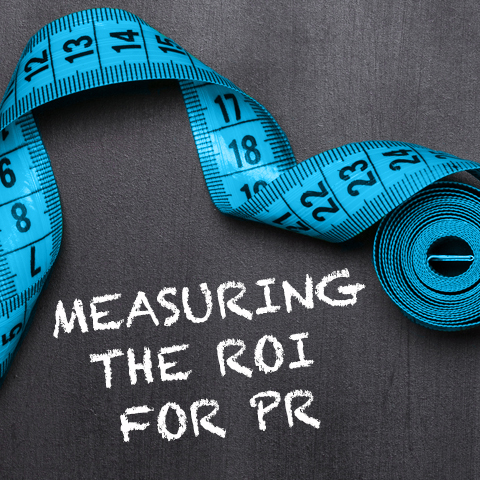Getting More than Your Money's Worth with PR

Bill Gates once said, “If I was down to my last dollar, I would spend it on Public Relations.” This strategic leader understood the purpose, power, and worth of public relations. In most cases, however, business executives and managers do not understand the direct impact that strategic communication has on the success of an organization.
In society today, with technology continuously evolving and the naturally short attention span that people have, it is becoming more and more difficult for businesses to capture and keep the attention and loyalty of audience members. With the help of strategic communications campaigns, however, organizations are able to stay on the minds of audience members through the consistent relaying of information, messages, and relevant and interesting content. Strategic communications professionals play a major role in keeping organizations relevant to the public while helping the organization grow its audience base and increase consumer loyalty. Effective communication is often the driving force behind the scenes of every successful organization. Still, many business leaders do not see strategic communication efforts as having a direct effect on the success of a business.
When business leaders look to strategic communications professionals for ROI on communication efforts, they often look for tangible, quantifiable results, such as direct sales. In advertising especially, business executives look for quantifiable results, such as click through rates and page views, because these types of results are easier to comprehend. While some strategic communication efforts can be quantified, the intangible aspects of these efforts, such as relationships built and interactions made, provide more insight than the numbers.
It is the job of the strategic communications professionals to utilize measurements for both tangibles and intangibles when evaluating their communication efforts. While people knowledgeable in the field of strategic communication understand the importance of effective communication, marketing, advertising, etc. to create awareness, build relationships, and drive business growth, many business leaders or people in more traditional roles do not always see the value and importance in these efforts. That's why it is important for us as strategic communications professionals to correlate those intangible aspects to the tangible aspects when relaying the return on investment to others. For example, while we know that building relationships is important, we must relate the building of those relationships to brand loyalty which, in turn, leads to repeat customers, or creating awareness means reaching an untapped audience thus creating the potential for an increase in customers and revenue.
In my personal experience, I've seen many strategic communications professionals measure ROI digitally through google analytics, social media analytics, and search engine optimization tools as mentioned in 4 Ways to Measure the Impact of Your PR Campaign. These resources allow strategic communication professionals to show quantitative data to their organizations on how many people have interacted with their ads/posts, or how many people have used social media as a customer service tool, and correlate that to increased customer traffic and customer satisfaction.
To help a client better understand an evaluation that includes both tangible and intangible aspects of a PR program, a strategic communications professional can connect the dots for the client. Instead of listing the intangible results and the tangible results separately, the strategic communications professional should explain how the two concepts worked together to achieve the desired results.
Often times, tangible items give obvious results (e.i. more ticket sales=more revenue), but the intangibles provide more depth into the not so obvious results that are equally important (e.i. higher engagement on social media with consumers=more customer satisfaction=more customer loyalty=more repeat customers=more revenue). While tangible items are directly related to the return on investment, the intangible aspects provide more insight on taking ROI to a level beyond the surface.
Instead of expecting all quantifiable data in ROI results for Public Relations campaigns, a strategic communications professional should encourage the client to think on a deeper level in terms of what their goals are for strategic communications campaigns. According to ROI on PR Campaigns, business leaders looking to implement strategic communications campaigns should not think in terms of “spending A will equal B”; instead, they should think in terms of “spending A will bring us B, C, D, and E.” For example, while spending money on a strategic communications campaign might not directly correlate to an increase in sales, it will bring stronger customer relationships, brand awareness, consumer engagement, and brand loyalty. These aspects can be just as impactful on the success and growth of a business as direct sales revenue.
Before implementing the next strategic communication campaign, articulate the reasoning behind running the campaign and outcomes and objectives are expected to come from it. Think beyond quantifiable results, and examine the qualitative results that could have just as much impact as the numerical data.
x
Comments
Post a Comment